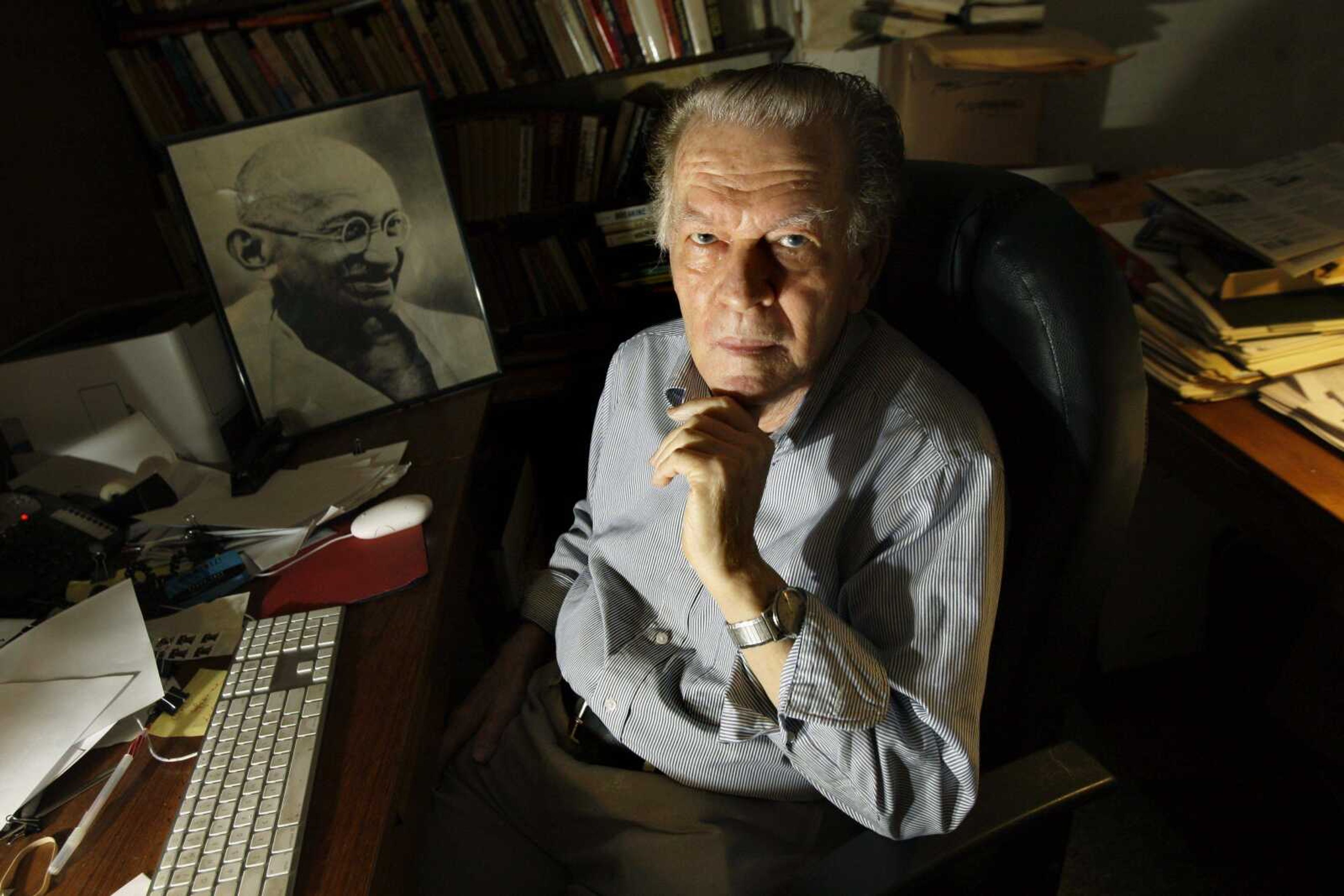Iranian protesters wondering what to do next are being encouraged to consult a source that helped drive a decade of nonviolent revolutions in Eastern Europe: a how-to guide to toppling dictatorships written by a retired American scholar who is little known outside of activist circles.
But the Iranian regime definitely knows about 81-year-old Gene Sharp.
His name and references to his 1993 book have buzzed around opposition websites and social networks.
Iranian officials have leveled the same charges against supporters of Mir Hossein Mousavi, who claims the June 12 election was stolen by vote rigging and fraud to re-elect President Mahmoud Ahmadinejad.
Sharp denies playing any role in driving Iran's worst internal turmoil since the 1979 Islamic Revolution. But he said he would be pleased if his work helped Iranians wage peaceful resistance.
"The more they learn that there is a nonviolent alternative to both violence and passive submission, the more chances they are to take a wise course of action rather than a stupid one," Sharp said.
There are multiple references to Sharp's text, "From Dictatorship to Democracy," on Twitter and Internet chat rooms, which have become the Iranian protest movement's lifelines.
Sharp's roughly 80-page book lists 198 nonviolent methods that protesters can use to pressure authoritarian regimes, ranging from adopting symbolic colors to staging mass strikes. Less conventional methods include skywriting and "protest disrobings."
"The use of a considerable number of these methods -- carefully chosen, applied persistently and on a large scale ... is likely to cause any illegitimate regime severe problems," advises the guide.
Sharp and other experts on nonviolent resistance say Iranian protesters need to diversify their methods away from just street marches, which attracted hundreds of thousands shortly after the election but have whittled down to hundreds as security forces tighten their grip.
Iran's supreme leader, Ayatollah Ali Khamenei, has rejected Mousavi's demand for a new election, and the country's feared Revolutionary Guard force has vowed to crush any further protests. At least 17 people have been killed in the unrest, in addition to eight members of the regime-backed militia force, the Basij, according to state media.
"If this movement is defined as street demonstrations against the police that may or may not turn violent, then the opposition will lose," said Peter Ackerman, the founder of the Washington-based International Center on Nonviolent Conflict, which held two confidential workshops in Dubai in 2005 for Iranian activists, some of whom were arrested when they returned home.
Srdja Popovic, one of the founders of Serbia's student resistance, said Iranian protesters have to be prepared for the long haul and come up with "low-risk" tactics. He pointed to calls on Twitter for protesters to turn on car headlights and stand across from security services holding the Quran as a good start, but said they need to do more.
He lauded some of Iranian protest tactics: wearing green -- the symbolic color of Islam -- and chanting slogans from the 1979 Islamic Revolution.
"You can't export nonviolent struggles against non-democratic regimes. Cultural and situational environments are too different," said Popovic, who now runs the Belgrade-based Center for Applied Nonviolent Action and Strategies, or Canvas. "But the principles are the same."
The refusal of security forces to crack down on protesters was critical to the success of the revolutions in Ukraine and Georgia, but the cohesion and harsh tactics of Iran's security forces raise doubts about the future of Mousavi's "green movement."
"Ukraine's ruling elite was split apart and opposition activists faced no danger," said Ukrainian political analyst Mikhail Pogrebinsky. "Violence and repression, lack of access to mass media and unity of the ruling elite leave little chance for Iranian protesters."
Thousands of Ukrainians protested for days in 2004 to force the government to hold a new presidential vote after the incumbent's victory was marred by fraud allegations. The pro-Western challenger, Viktor Yushchenko, eventually prevailed.
Analyst Soso Tsintadze in Georgia, where protesters forced President Eduard Shevardnadze to resign in 2003 and brought a pro-Western opposition leader to power, also was pessimistic.
"Iranian leaders are no Shevardnadze, whose power was really weak," Tsintadze said. "They are strong people who control the situation, and the military did not rebel, while in Shevardnadze's case the mutiny in the military was a crucial step."
Mousavi has refused to give up, however, and has urged his backers to maintain protests but avoid violence.
"The seed of change is obviously growing among the Iranian youth," said Popovic, the Serbian activist. "It will be impossible for conservatives to cancel this process, even if they can suppress actual protests and install Ahmadinejad as president for another term."
Lech Walesa, the famed leader of Poland's Solidarity movement and the country's first democratically elected president following Communist rule, counseled perseverance.
"Lead your struggle in a wise way but do not hit your heads against the wall," said Walesa. "If not this time, you will win next time."
-----
Abbot and Kratovac reported from Cairo. Associated Press Writers Monika Scislowska in Warsaw, Poland; Mansur Mirovalev in Moscow; and Misha Dzhindzhikhashvili in Tbilisi, Georgia, contributed to this report.
Connect with the Southeast Missourian Newsroom:
For corrections to this story or other insights for the editor, click here. To submit a letter to the editor, click here. To learn about the Southeast Missourian’s AI Policy, click here.







